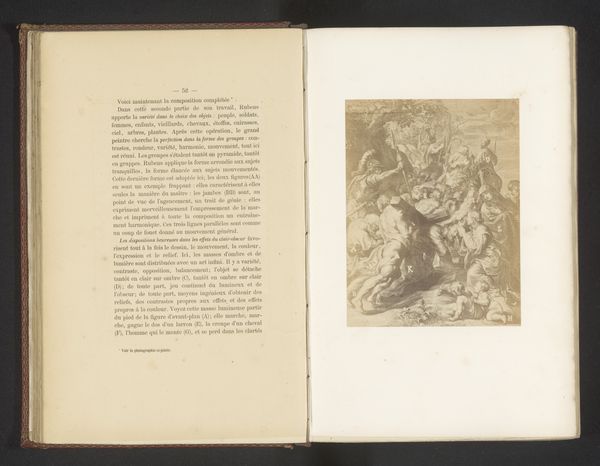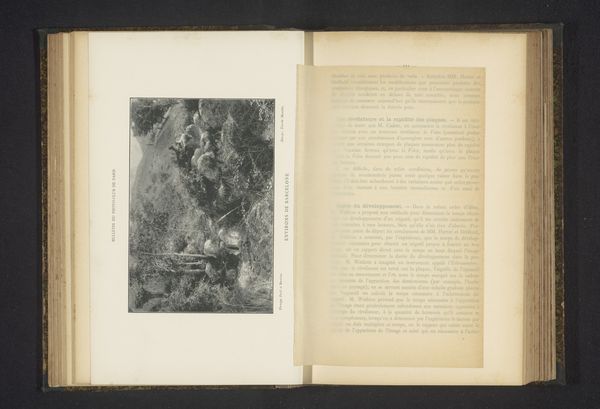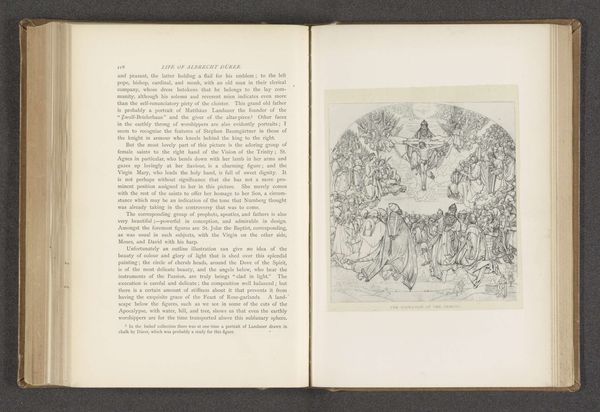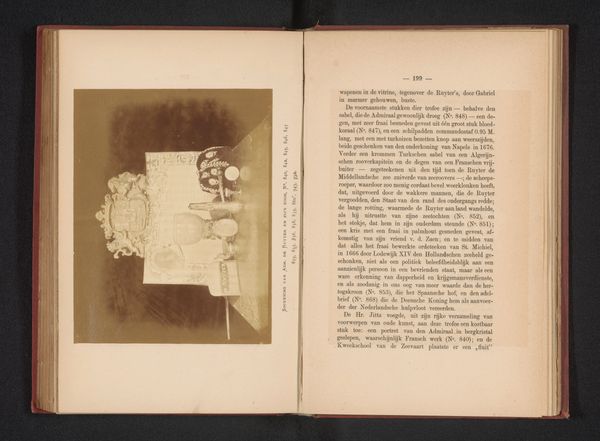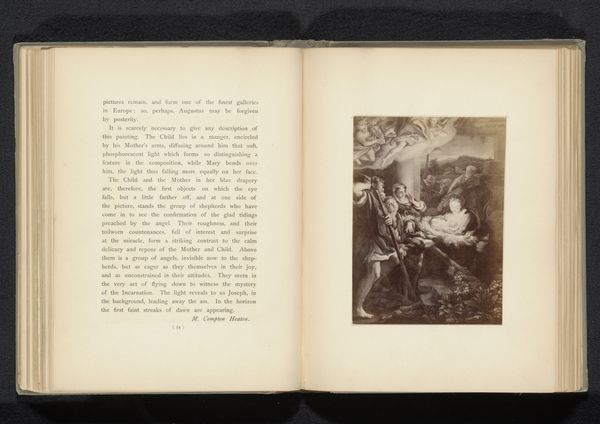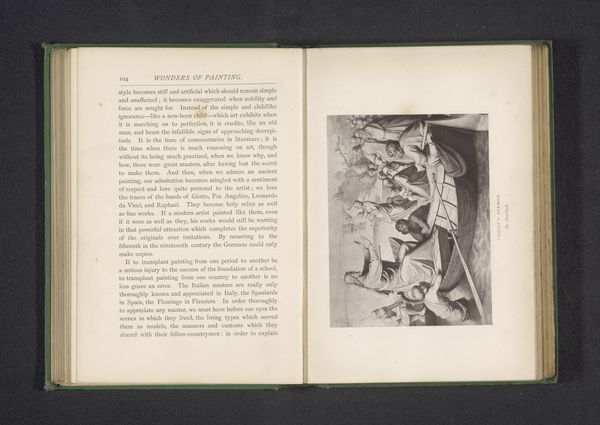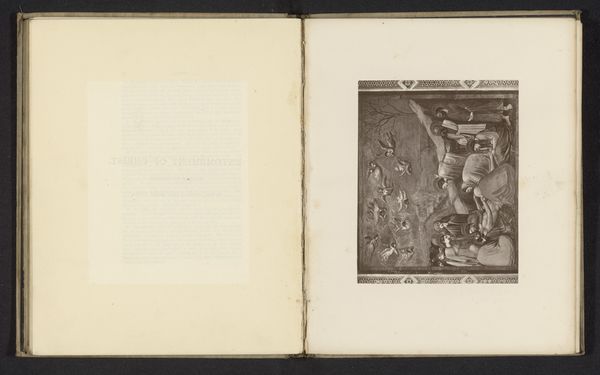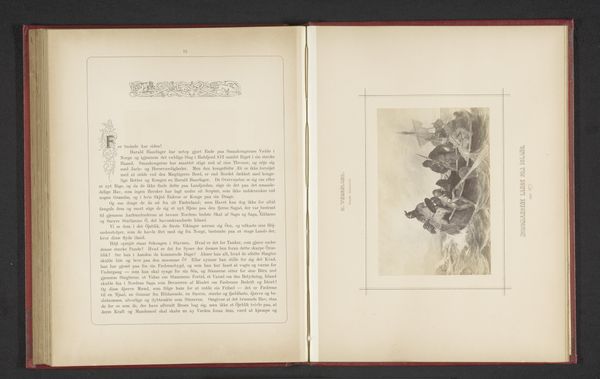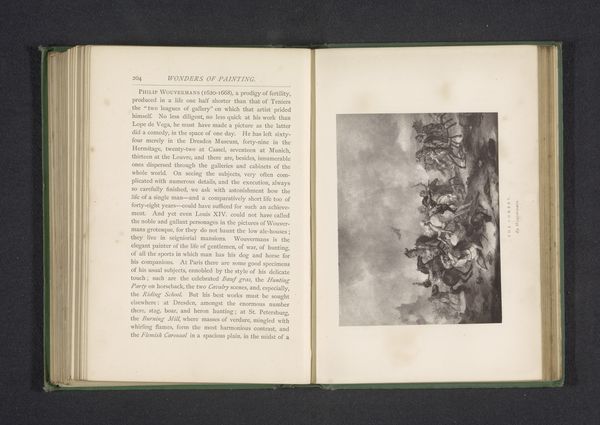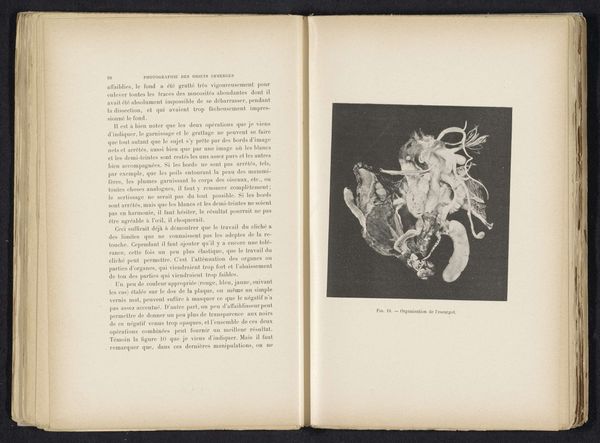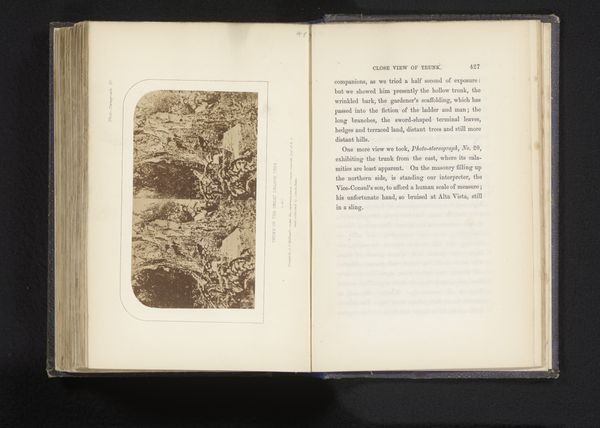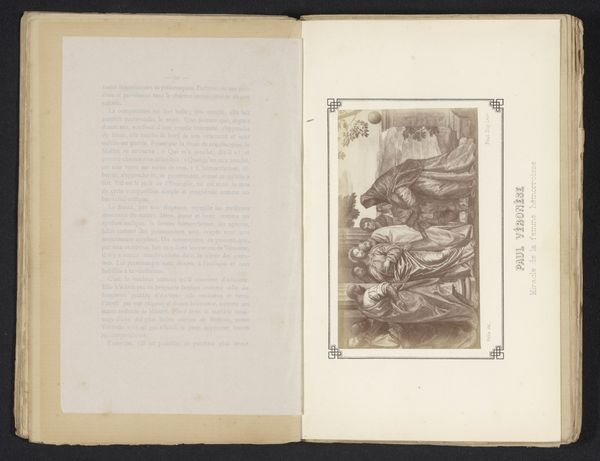
Reliëf met daarop afgebeeld de Sabijnse Maagdenroof door Francis de Bossuit 1876
0:00
0:00
pieteroosterhuis
Rijksmuseum
drawing, carving, print, relief, bronze, sculpture, marble
#
drawing
#
carving
#
narrative-art
# print
#
relief
#
classical-realism
#
bronze
#
figuration
#
sculpture
#
history-painting
#
academic-art
#
marble
Dimensions: height 126 mm, width 166 mm
Copyright: Rijks Museum: Open Domain
Curator: This drawing captures an ivory relief sculpture, "The Rape of the Sabine Women" created by Francis de Bossuit. It was documented in 1876. Editor: It's chaotic! Bodies intertwined, a whirlwind of marble limbs. I immediately feel the tension and violence inherent in its subject. Curator: Indeed. This artwork stems from a well-known episode in Roman history, focusing on Romulus's strategic abduction of women from the Sabine families to populate Rome. Bossuit masterfully employs classical realism, aligning himself with Academic art traditions to elevate the historical narrative. It’s interesting to contextualize this piece alongside the broader cultural obsession of its time with antiquity and historical narrative. How do you feel that it interacts with contemporary theory about its subject matter? Editor: As a work now presented by the Rijksmuseum, "The Rape of the Sabine Women," unfortunately, upholds patriarchal and colonial narratives. The ‘heroic’ abduction, presented through the white lens, risks glossing over the real trauma of violence inflicted on women. Understanding this within intersectional perspectives – race, gender, class – allows us to challenge the gaze inherent within its production and reception, both during its own era, and as a period room centerpiece today. Curator: It does place viewers in a challenging position, grappling with historical reverence while acknowledging the inherent issues in the story being depicted, which has shaped our Western patriarchal viewpoint and bias. Editor: Absolutely. Analyzing Bossuit's relief, not just as a standalone artwork, but also through socio-political history, prompts essential dialogues. How did art of this era shape public perceptions of power, gender, and the historical ‘other?' This way, we transform appreciation of form into an opportunity for much needed intersectional discourse, ensuring the work can stand up to our increased knowledge about inequity. Curator: This approach offers a framework for considering identity and societal dynamics through artwork; it’s the power of art history in our contemporary era. Editor: Precisely, engaging in honest discourse with an activist spirit transforms the viewer experience to critically question our own contemporary narratives and how we interact with social biases.
Comments
No comments
Be the first to comment and join the conversation on the ultimate creative platform.
